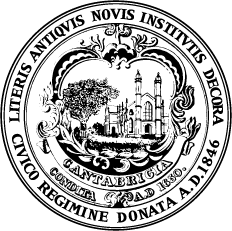Since the novel coronavirus emerged in Massachusetts this past winter, the Cambridge Public Health Department (CPHD) has been working to slow its spread through testing, contact tracing, and educating the public about prevention measures. These tried and true public health strategies are routinely used to limit transmission of infectious diseases.
Now a partnership with Biobot Analytics, Inc. in Cambridge offers a new approach to tracking COVID-19 outbreaks: analyzing wastewater. This week, for the first time, Cambridge will have access to local wastewater data that will serve as an early warning signal of increased COVID-19 infections in the city. This new monitoring tool will augment more traditional public health approaches for tracking and responding to disease outbreaks. The Cambridge Public Health Department is planning to make the data publicly available on the City’s COVID-19 data dashboard in the coming weeks.
Three collection points have been identified that cover the majority of the city with little overlap into neighboring communities. The Cambridge Department of Public Works and Massachusetts Water Resources Authority are providing access to the sewer system, and Biobot is working with an engineering firm to provide the sampling equipment and collect weekly samples from the three locations.
Biobot is a firm started by former MIT researchers that uses data gleaned from sewage to gain insights into human behavior, biology, and health. Biobot brings together biologists, epidemiologists, data scientists, urban planners, and engineers who are helping pioneer a new field of wastewater epidemiology.
The COVID-19 pandemic spurred Biobot to adapt its protocols to detect viral RNA particles from the novel coronavirus in wastewater. Infected people shed these microscopic particles in their bodily fluids, such as feces, which then get flushed down the toilet into the municipal wastewater stream.
This new technology provides a valuable source of data showing the prevalence of the virus in a particular geographic area. Importantly, spikes in viral levels in sewage can help identify increases in infections three to seven days before data from individual testing reflect the trend. This can give public health officials a head start on a local response.
Since March 2020, the Massachusetts Water Resources Authority has been working with Biobot to monitor levels of coronavirus RNA in wastewater at the Deer Island Treatment Plant. Cambridge contributes to the regional sample covering the northern suburbs with other regional communities.
The Cambridge Public Schools took advantage of this data source in designing its back-to-school-reopening plan this fall. The group of scientific experts advising the public schools, which included CPHD staff, advocated for including levels of COVID-19 in wastewater as one of the district’s three metrics for determining when to reopen schools or temporarily shift to all-remote learning.
This Cambridge wastewater surveillance initiative is being funded through a $175,000 appropriation from the Cambridge City Council.

